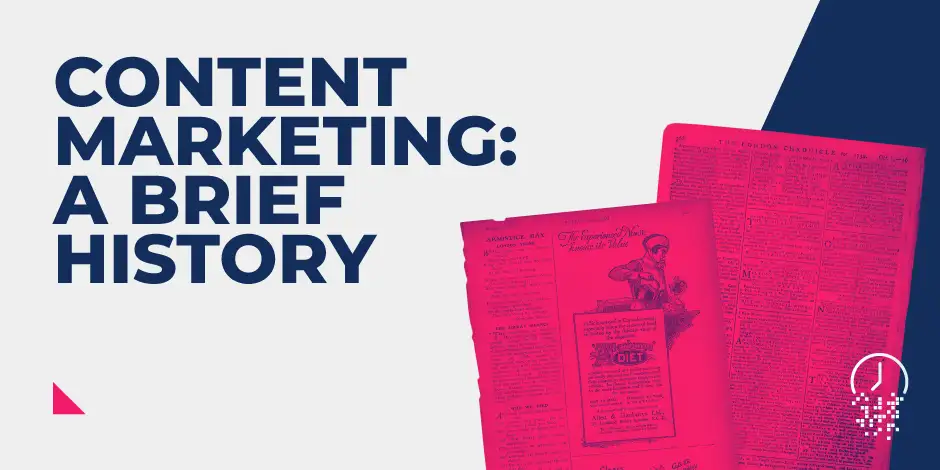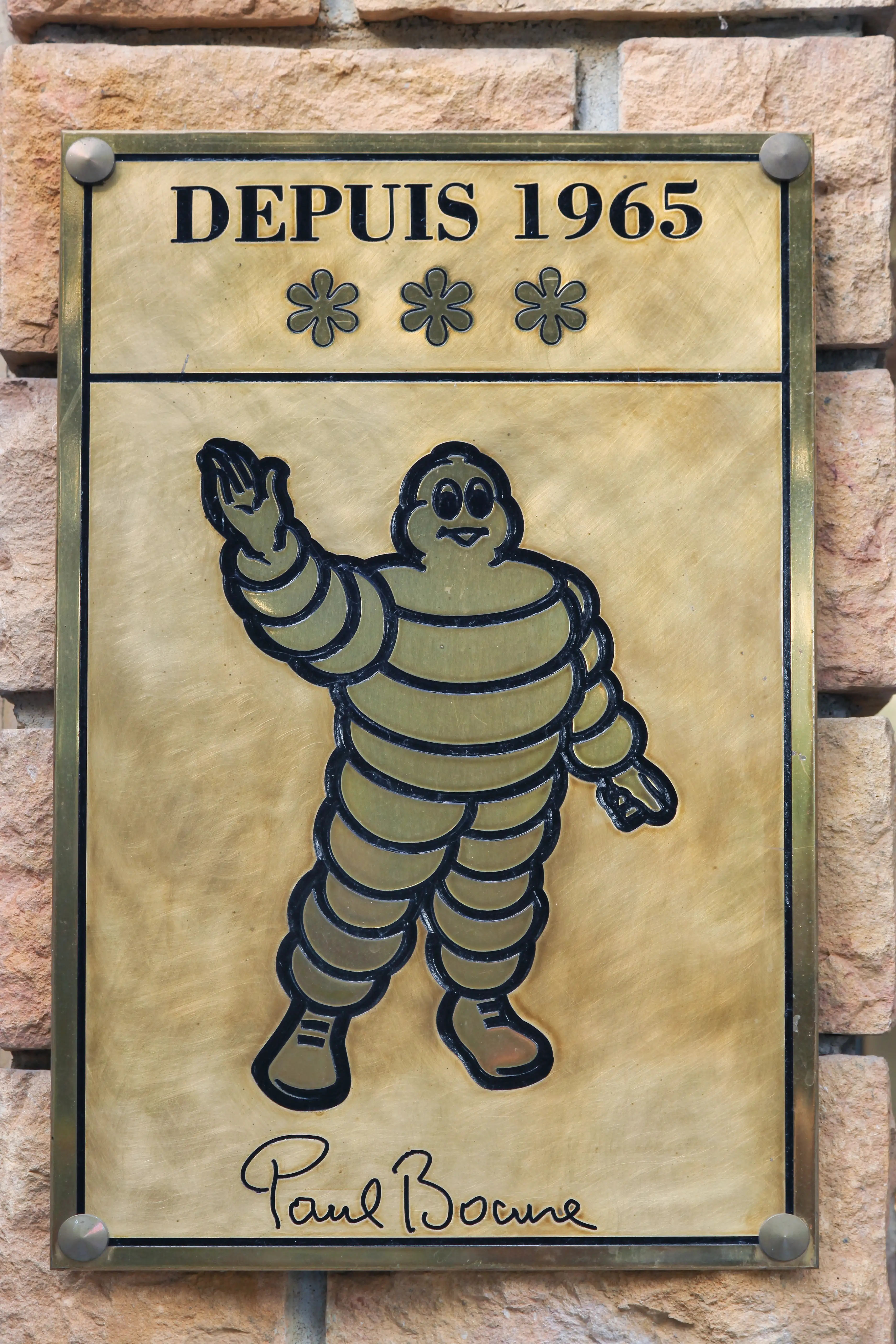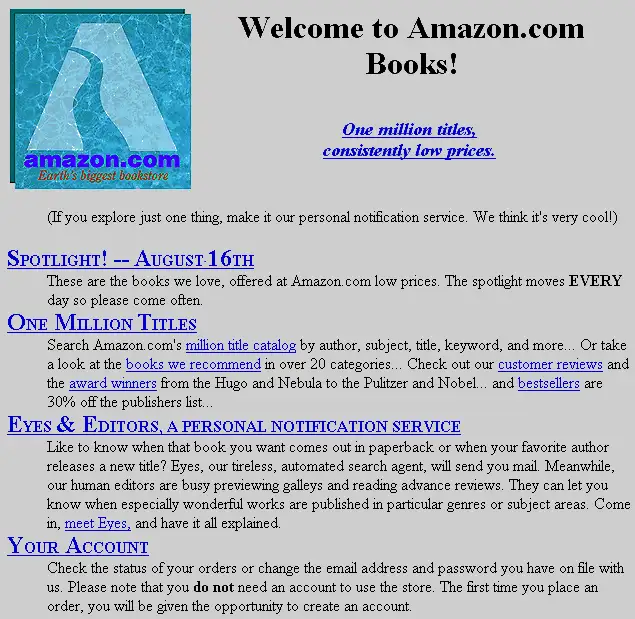

Content Marketing: A Brief History
"Content is King" is a phrase that pretty much all marketers will have heard before, and it's something that the content marketing team here at Reboot will definitely agree with.
What people outside of marketing may not know is that content is actually its own branch of marketing, covering a variety of different formats. This includes videos, images and of course, lots of different kinds of content writing – everything from emails to product descriptions to blog posts, just like this one!
Content marketing is absolutely everywhere nowadays. It's all over the television, it's a big part of all of your favourite social media sites. There are probably numerous examples of it sitting in your email inbox right at this very second.
So, where did content marketing begin? And how did it turn into the content marketing we know today? Let’s find out.
The birth of content marketing
You may assume that content marketing is a pretty modern concept. After all, so much of it seems to be online. In truth, however, this type of marketing is probably far older than you think it is. The first example of content marketing is generally considered to be John Deere’s (yes, the tractor company) agricultural magazine, The Furrow. The brainchild of Deere’s son, Charles, the magazine published ads and articles geared towards those within the farming industry.
As quoted in The Drum, David Jones, publications manager at John Deere, said that the magazine tapped into “potential promotional value in providing an accurate, unbiased source of information to farmers at the time”. The magazine actually proved to be such a valuable resource for farmers that it’s still in publication 127 years later. That’s right, that means that content marketing began all the way back in 1895!
Not only has the magazine achieved astonishing longevity, but throughout its lifespan, it’s also had considerable reach. Jones goes on to describe that there are currently over 500,000 Furrow readers in North America alone, 40% of whom will read each magazine edition cover to cover – including ads. This means that The Furrow is now achieving an incredible 25 million impressions every single year.
Jones credits the current success of the magazine to the content team, made up of agricultural experts who are “completely in tune with… the magazine’s readers.” It seems that the magazine has done a stellar job of cementing itself as a reliable and trustworthy industry leader, an achievement that Jones and his team do not take lightly. “We know that a reputation that has taken 175 years to build up would only take a fraction of that time to tear down.”
 Photo credit: gabriel12 / Shutterstock
Photo credit: gabriel12 / Shutterstock
The Michelin Guide
The story of how an award from a tyre company became sought after in the restaurant industry is another example of fantastic early content marketing. After being founded in France by the Michelin brothers in 1889, the Michelin tyre company published the first installation of their famous Michelin guide 11 years later, in 1900.
While restaurants and tyres are entirely different industries, combining the two and turning the result into compelling content was a stroke of marketing genius. It revolutionised the Michelin brand, the restaurant sector, and content marketing.
When the guide's first edition was published, 35,000 copies were produced and given out for free. This was because the brothers’ goal wasn’t to make money from selling the guides – it was actually to increase demand for cars and, in turn, tyres in a country where there were just over a couple of thousand drivers.
The first Michelin Guide editions contained maps for people to use during road trips, lists of useful stops for petrol and car maintenance, and recommendations for good hotels and restaurants. Plus, of course, instructions on maintaining and repairing your Michelin tyres. The guides proved to be so useful to drivers that it was in high demand throughout Europe and North Africa within just a decade of the first guide being published.
However, it did take some time for the guide to start awarding its illustrious ‘stars’ to restaurants. This system began in the 1920s and coincided with the brothers’ revamp of the magazine, which they had began to charge for after ramping up the quality and content. Michelin began by awarding a single star to a “fine dining establishment”, and from there, the rating system grew to become what it is today. Now, a restaurant with even one Michelin star is considered to have achieved a very high honour.
 Photo credit: Ricochet64 / Shutterstock
Photo credit: Ricochet64 / Shutterstock
Tony Fouladpor, a Director at Michelin, told Business Insider: “Some say that the Michelin Guide is the Bible of all dining guides”.
The success of the Michelin Guide was down to how served as a marketing tool for various companies and industries that were seemingly entirely unrelated to one another, and did so in a way that was genuinely helpful for its readers.
Instead of, for example, inserting blatant advertisements for hotels, restaurants and Michelin tyres, the brothers succeeded in creating content that raised brand awareness, entertained and advised simultaneously. These guides proved genuinely valuable for a society just waking up to a new reality of life with automobiles, making long-distance travel easier than it had ever been before.
Modern content marketing
Despite content marketing having been around for decades, the phrase ‘content marketing’ itself was thought to have been coined in 1996 at a journalism conference in the US by John F Oppedahl. This new turn of phrase was used to describe a novel medium of marketing that would, yet again, revolutionise the advertising world and the world as a whole. That, of course, was the internet.
Marketers could now harness the newfound power of the web to change the landscape of both direct and indirect marketing, initially, simply through emails and websites. One of the first examples of these is the corporate powerhouse, Amazon, which entered into the online world in 1994. Its website advertised books under the slogan “One million titles; consistently low prices.”
Far from the sleek, modern website we know today, Amazon’s original site was pixelated, grey and filled with written content in Times New Roman font. Still, it is an amazing example of how the mere presence of a brand’s content online in the ‘90s could provide a solid foundation for an extremely successful business.
 Photo credit: Wayback Machine
Photo credit: Wayback Machine
Following on from simple websites and email campaigns in the ’90s came the creation of the social media giants we know today, such as Facebook, Instagram, Twitter, and TikTok. All of which have provided endless content marketing opportunities for brands across the globe. These platforms have become part of everyday life for most of us, proving so popular that:
•Instagram has an advertising audience of over 1.16 billion users, with 90% of these following at least one business.
•55% of US teens are now TikTok users – a platform on which numerous brands have gone viral.
•Twitter is attracting over 200 million daily users and is now serving as a great customer service tool for businesses. According to Twitter itself, “64% of customers on Twitter say they would rather message a dedicated support handle than call a business.”
•Facebook has 2.9 billion users active monthly.
More generally, content marketing is now such a staple of the marketing landscape that digital marketing now accounts for an average of 75% of a company’s marketing budget.
The future of content marketing
While no one can be certain of what the future of content marketing will look like, experts in the field can make educated guesses based on past trends and predicted technologies.
Perhaps one of the most exciting predictions (and challenges) about the future of content marketing is the increased use of artificial intelligence in the content creation process. According to recent content marketing statistics, 67% of marketers now use AI tools for tasks such as content production and optimisation, and over 83% plan to adopt AI tools going forwards.
In a piece on marketing trends by Core DNA, Massimo Chieruzzi of AdEspresso is quoted as saying that AI’s have “already proven to be capable of writing decent quality content at scale. While this content is clearly not enough for high-quality blog posts, the lower end of the market and SEO spammers will start adopting it massively for content production, increasing the noise in the SERP.”
Although it may seem lightyears away, AI technology is actually being used right now in e-commerce through the use of chatbots, which is something all of us will have encountered already at one point or another. AI is also being used for A/B testing, content analysis, and keyword research in tools such as Clearscope and SparkToro.

As well as AI, current content marketing techniques will continue to grow and flourish. According to Hubspot, “the exploration and expansion of video as the preeminent medium for content marketing is going to continue.” This is based on the exponential growth of video content, which was the primary form of media for a massive 70% of marketers in 2021.
Another key element of the future of content marketing is undoubtedly going to be content created specifically for mobile viewing. The number of people now accessing brand content on mobile is huge, with Statistica reporting that worldwide data traffic for 2022 will be seven times bigger than in 2017.
Regardless of precisely what the future does hold for different forms of marketing, given the explosion in the popularity of online content over the past couple of decades, it’s safe to say that content has, is and will continue to be king in the world of marketing.
Sources
https://www.rebootonline.com/blog/which-social-media-platforms-you-should-be-using/
https://blog.hollywoodbranded.com/10-products-that-have-gone-viral-on-tiktok
https://business.twitter.com/en/blog/how-twitter-has-become-a-key-customer-support-channel.html
https://mediakix.com/blog/marketing-facts-to-know/
https://www.coredna.com/blogs/artificial-intelligence-and-machine-learning-in-ecommerce
https://guide.michelin.com/th/en/history-of-the-michelin-guide-th
https://www.businessinsider.com/history-of-the-michelin-guide-2014-10?r=US&IR=T
https://prosandcontent.knotch.com/posts/history-of-content-marketing#:~:text=The%20term%20%E2%80%9Ccontent%20marketing%E2%80%9D%20itself,consider%20%E2%80%9Cmodern%E2%80%9D%20content%20marketing.
https://www.webdesignmuseum.org/web-design-history/amazon-com-1995#:~:text=Amazon.com1995%20July%2016,%2C%20clothes%2C%20toys%2C%20etc.
https://www.coredna.com/blogs/content-marketing-trends#5
https://www.statista.com/statistics/271405/global-mobile-data-traffic-forecast/
https://www.futureofeverything.io/future-content-marketing/
https://www.forbes.com/sites/johnhall/2021/08/25/the-future-of-content-could-be-more-interactive/